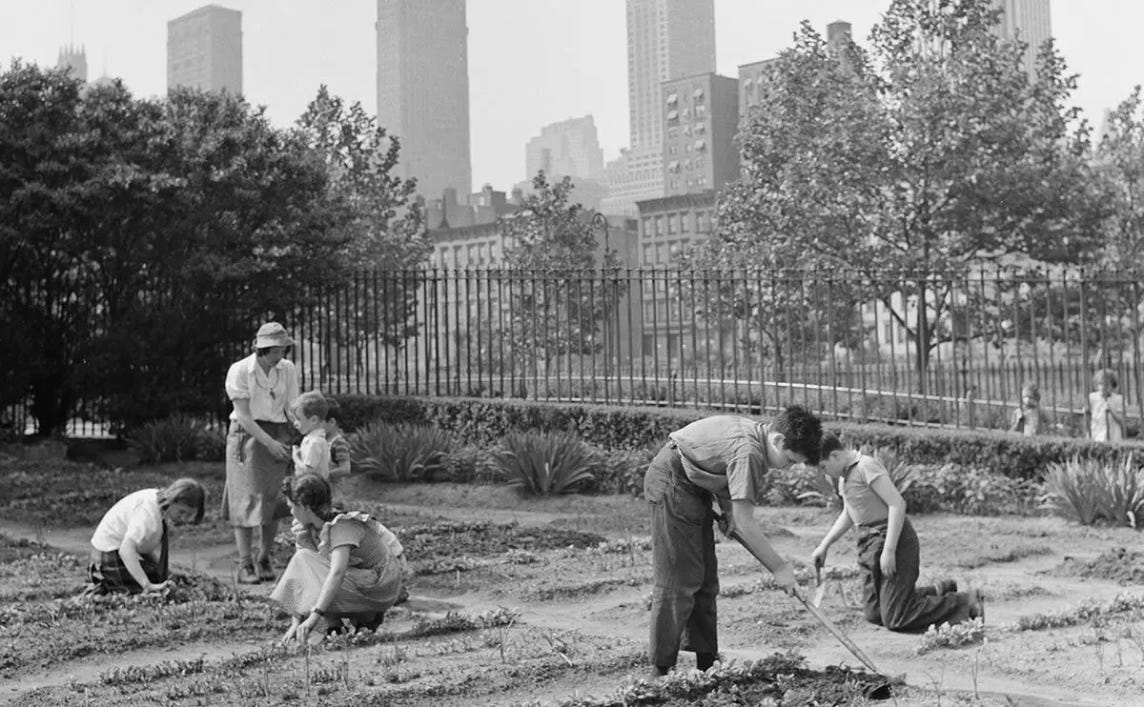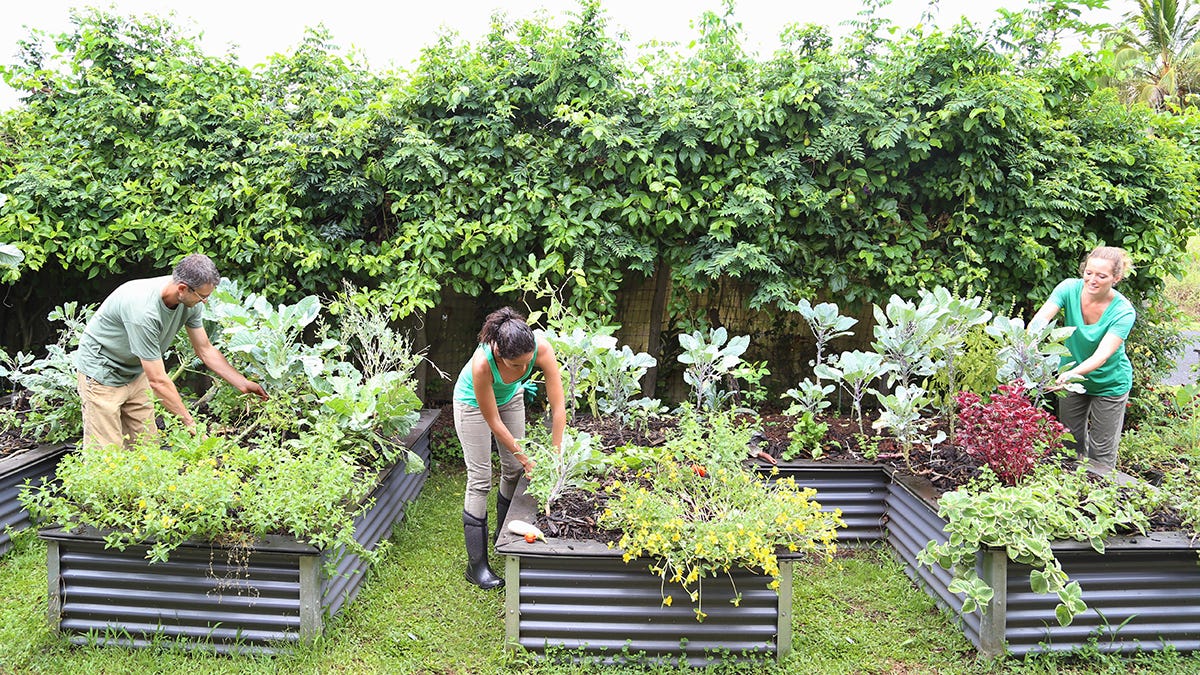Winds in the East
You don’t always need a barometer to know when the wind turns. Bert, the lovable chimney sweep/chalk artist/one man band in Mary Poppins simply senses that something is changing.
“Winds in the east, mist coming in,” he sings, looking above the rooflines of turn-of-the-century London.
“Like something is brewing, and ‘bout to begin.” The camera pushes in tight on his face.
“Can’t put me finger on what lies in store.” The small crowd of onlookers exchange puzzled glances.
“But I fear what’s to happen all happened before.”
And while I hesitate to point to the nearly prophetic foreshadowing brought to us by a beloved fictional character, the winds in the East have been up for a while now.
When I don’t know what to make of that, I go rummaging in older weather.
On a scrubby municipal field in 1931, someone nailed two signs to a wooden shed. “DETROIT THRIFT GARDENS,” one read. And beneath it: “NO WORK AFTER 8 P.M.”
Women in threadbare coats and boys with school-issued hoes assembled along the rows of cabbages. The committee came in hats and with clipboards, crouching to inspect what pushed from the earth, murmuring about beetles, and moving on.
The Great Depression isn’t just a handy name to refer to a time of economic unrest. It was also the national mood. With paychecks evaporating and pantries dangerously thin, officials in Detroit did something stubborn and simple. They created thrift gardens — plots carved out of vacant tracts of land ringed by houses and utility poles where families could plant vegetables with city-issued seeds and tools.
By the 1932 growing season, the thrift garden project stretched like a patchwork across the city: 6,600 plots on 400 acres. Gardeners pinned numbered badges to their coats, signed pledges not to sell anything they grew and to keep track of their bounty, and took turns on the night watch. The city provided families with fertilizer, seeds for plants that could handle the Michigan cold, and workshops on how to can what they grew.
The Detroit News noted that in one sample of gardeners, Germans, Hungarians, and Austrians worked alongside Mexicans, Ukrainians, Serbians, Russians, and Black Americans. This was no time to worry about whether your neighboring grower spoke perfect English: the mist was coming in, remember? The newspaper described it as “a Babel of tongues” — people of all types were welcomed as equals into the program.
Buried in a city memo is a line that reads like a benediction: “Fresh air, sunlight, and the visible results of their own work have altered the morale of many gardeners.” The badges, the ledgers, the inspections, the manure, and the hoes — they weren’t bureaucracy for bureaucracy’s sake. They were the scaffolding for endurance. A row of radishes couldn’t fix the economy. But it could fix dinner. The sunshine couldn’t put dollars in the bank. But it could stave off a depression that ventured into the territory of great.
New York City gridded out the same logic. By 1935, there were five thousand gardens stitched across the boroughs. A promise ran in the Brooklyn Daily Eagle: “The person who wishes to raise his own vegetables will be furnished the land, tools, seeds… and instruction in the art of agriculture.” The city was telling its tired residents: “We can’t stop the wind, but we can stand in it with you.”
Detroit and New York were building repeatable, recognizable shapes. Neighbors over isolation, organizational systems that kept them moving. Logging their harvest made progress measurable when little else was.
Stories like these get flattened by time. It’s too easy to make gardening adorable. But the “NO WORK AFTER 8 P.M.” requirement wasn’t a quaint “be sure to kick your feet up” edict, it was an acknowledgement that exhausted people needed to line up the next day for relief checks or to search for nonexistent jobs.
When I read through the files now, I can see the days in Detroit or New York. A shed door sticks in the humidity. A mother’s tears slip silently down her cheeks. A child’s crooked planting row is corrected by a neighbor. It’s not cute. It’s the work of people who were experiencing a great depression.
There is a temptation, in times like these, to believe that our exhaustion disqualifies us from usefulness. We imagine people who did harder things and endured more for longer, and we imagine they were made of tougher stuff.
But they weren’t. They were as weary and as ordinary as we are. The difference is that they built structures outside of themselves to carry them forward. The garden plots didn’t demand heroism, only habit, and that is still available to each one of us today. They offer us a reminder: not everything. Something. Not someday. Dinner tonight.
If you are hunting for hope this week and struggling to make it appear on command, you’re not alone. But hope is not a feeling we conjure, it is a habit we can practice. The thrift gardens were not designed to produce inspiration, they produced food.
The inspiration followed because people were doing shared, regular, visible things outside in the fresh air and the sunlight. We can smirk at that line, or we can admit it might be exactly what we need.
Gardens are not a universal solvent — the season is rapidly approaching an end where I live — but what I am offering is the pattern beneath them. Choose a piece — however small — of the burden you can carry, and then structure your persistence so it does not depend on the adrenaline of headlines.
If gun violence in schools is what you cannot ignore: set a reminder on your phone to make phone calls every month. If immigration courts are the thing you cannot look away from, show up with bottled water on hearing days.
Maybe Bert was right: what’s to happen has happened before. And if we cannot still the wind, we can decide what to plant in it, and with whom.








I just want to point out clearly for everyone. The voices we should be listening to - the truth-tellers and light-bearers - they remind us to regulate our emotions and act from values. Sharon, you do this so consistently and beautifully. This line today, “then structure your persistence so it does not depend on the adrenaline of headlines.” That is the light. That is integrity, wisdom and profound respect for the reader. You are a beacon. We will persist with you.
When you write the post I can tell immediately. Your tone is so hopeful and soothing. I would say a lullaby but it doesn’t put me to sleep it wakes me up. Thank you. For your knowledge that you share in such powerful yet soothing ways! I just moved and am getting the new neighbors I met to go with me next week to cook a meal for Ronald Macdonald house. Asking vendors Saturday at farmers market for bruised veggies to make a big pot of veggie chowder. It is something small but brings us together and helps some families. Maybe every week! Thank you for your encouragement!